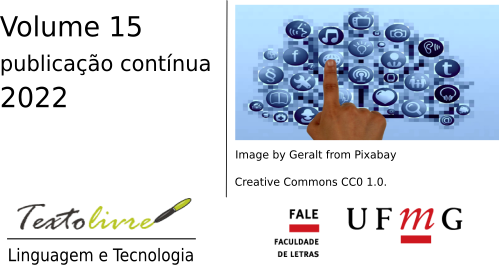Neurociência, neuroeducação, neurodidáctica e tecnologia
Palavras-chave:
editorialResumo
This monograph entitled "Neuroscience, neuroeducation, neurodidactics and technology" is inserted not only in the current scientific situation, but also responds to the need to establish the research bases that allow the advancement of education with a neuro and technological base.
Charles Scott Sherrington is considered the pioneer of Neuroscience (MORA, 2002). Neurosciences constitute a set of knowledge that focuses on studying the structure and functioning of the nervous system, as well as the interaction of the elements of the brain that give rise to the behavior of human beings (BLAKEMORE & FRITH, 2007; MANES & NIRO, 2014), in order to understand how thought, consciousness, social interaction, creativity, perception, free will, emotion, among other facts, originate, which leads to the multidisciplinary nature of this new science. It must bring together neurologists, psychologists, psychiatrists, philosophers, linguists, biologists, engineers, physicists and mathematicians (MANES & NIRO, 2014), as well as physicians, sociologists, theologians and a long list of others, since understanding brain functioning is everyone's responsibility (CUMPA, 2019).
The application of neuroscience in the educational field is called neuroeducation. This discipline that aims to develop new teaching and learning methods by combining pedagogy, neurobiology and cognitive sciences (MANES & NIRO, 2014). Neuroeducation is a branch of education, which links knowledge based on neuroimaging with the way the brain interacts with its environment. Specifically, it focuses on the learning/teaching process. A new look at the school process that links Neuroscience and Education (BÉJAR, 2014).
The practical application of neuroeducation is neurodidactics, proposed by Gerhard Preiss, in 1988 at the University of Freiburg. It is the application of knowledge about the functioning of the brain and the intervention of neurobiological processes in learning, in order to make it optimal and efficient (FLORES & GIGIOIZ, 2009).
The need to provide this scientific space is given by the emergence of Neuroscience in all sectors of knowledge, and lately with great impact in the educational context, where Neuroeducation and especially Neurodidactics have become emerging disciplines, necessary and inevitable in the work of teachers.
This monograph, wants to provide the current state of neuroeducation and technology, for which, we begin with the innovative studies of neuroimaging in neuropedagogy and neuromethodology, we continue relating neuroeducation and technology in vulnerable groups, as well as the relationship with the teaching-learning process. On the other hand, it includes a study on neuromarketing and technologies, neurodidactic factors in the prediction of university dropout, teacher professionalization, cognitive neuroscience, IOT and neurodiversity, the influence of ICT and social networks in social exclusion and the monograph ends with the concept map cmaptools as a neurodidactic tool.
We hope that the reader will enjoy this monograph and that it will mark the beginning of future research in neuroscience, neuroeducation, neurodidactics and technology.
Downloads
Referências
BÉJAR, M. Neuroeducación. es,en. Padres y Maestros / Journal of Parents and Teachers, n. 355, p. 49–53, 2014. Disponível em: https://revistas.comillas.edu/index.php/padresymaestros/article/view/2622. Acesso em: 20 set. 2022.
BLAKEMORE, S. J.; FRITH, U. Cómo aprende el cerebro: las claves para la educación. Barcelona: Ariel, 2007.
CUMPA VALENCIA, M. Usos y abusos del término “neurociencias”: una revisión sistemática en revistas indexadas en Scielo. ConCiencia EPG, v. 4, 1 (Enero - junio), p. 30–67, 2019. Disponível em: https://dialnet.unirioja.es/servlet/articulo?codigo=7304977. Acesso em: 20 set. 2022.
FORÉS MIRAVALLES, A.; LIGIOIZ VÁZQUEZ, M. Descubrir la neurodidáctica: Aprender desde, en y para la vida. Barcelona: Editorial UOC, S.L., 2009.
MANES, F.; NIRO, M. Usar el cerebro: conocer nuestra mente para vivir mejor. Buenos Aires: Planeta, 2014.
MORA TERUEL, F. Cómo funciona el cerebro. Madrid: Alianza, 2019.
Downloads
Publicado
Como Citar
Edição
Seção
Licença
Copyright (c) 2022 Claudia De Barros Camargo, Antonio Hernández Fernández

Este trabalho está licenciado sob uma licença Creative Commons Attribution 4.0 International License.
Este é um artigo em acesso aberto que permite o uso irrestrito, a distribuição e reprodução em qualquer meio desde que o artigo original seja devidamente citado.











